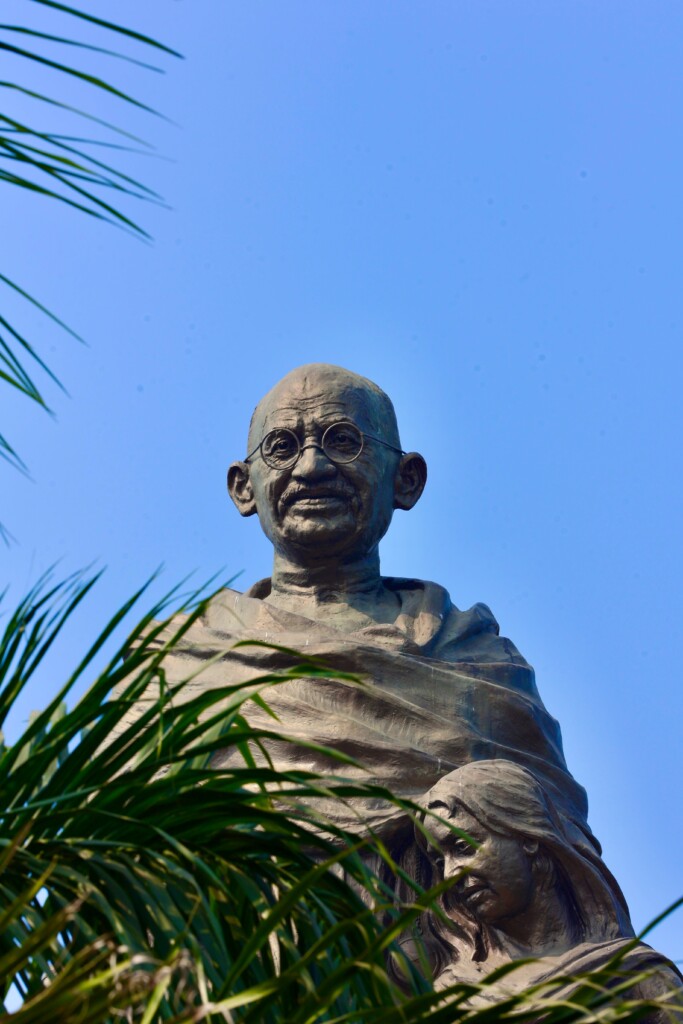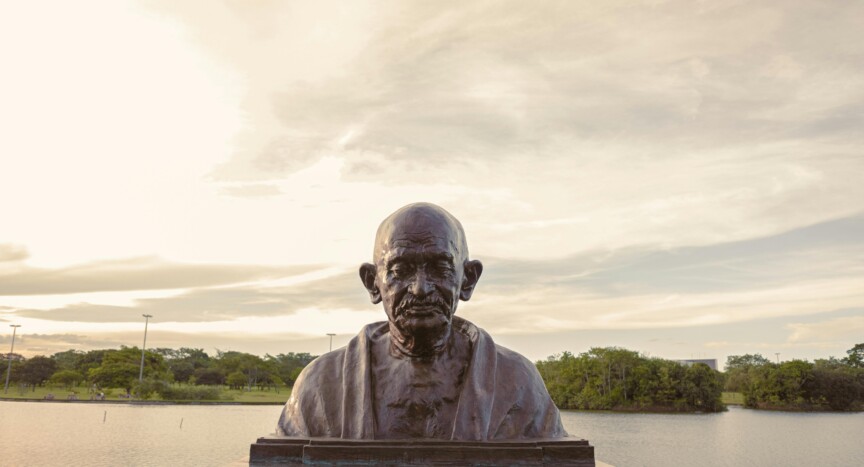August 15, 1947: a day marked in the hearts of every Indian. After 300+ years of British rule, Gandhi paved the way for Indian independence. His nonviolent movement for independence had made happen what seemed to be impossible for a long time. The success, today reflected in many books, movies and paintings, shows the importance and legacy of the father of the nation’s ‘ahimsa’ movement. However, fewer people are aware that in India, at that time, a parallel movement occurred. Led by Subhas Chandra Bose, this movement was driven by the same goal, but deployed different tactics. What follows is a very brief historical overview of this parallel movement, with the intention to illustrate how a social movement did not deliver the required outcome due to the deployment of violent tactics.

Considering the length and the multifaceted nature of Indian history, the starting point here is the establishment of the Indian National Congress (INC); a committee through which Indians could voice their interests. It was meant as place for dialogue, not to discuss independence. However, this turned in the early 20th century, when the demands became more radical and advocacy in favour of Indian independence started, due to constant opposition of the British government. From 1920 to 1934 Gandhi led the INC. He favoured a nonviolent civil disobedience approach. These ‘satyagraha’, took various forms; boycotts, protest marches and fasting among others. He gained a lot of support, also from Subhas Chandra Bose, who became Gandhi’s close associate (Pandey, 2023). However, soon after meeting with Gandhi, it became clear that their envisioned road to India’s independence was widely different (Gordon, 2006). Contrary to Gandhi, Bose found all means acceptable to gain independence from the colonialists (Gordon, 2006; Jaiswal, 2014). This caused a rift in the Indian freedom movement between on the one hand the moderates led by Gandhi, and the so-called extremists led by Bose (Nandy, 2022).
Extremism has arguably always been a part of the Indian freedom struggle, such as the sepoy mutiny of 1857 or the symbolic bombing of the Central Legislative Assembly in Delhi by Bhagat Singh and his associates. However, these were arguably single pockets of uprisings, which changed with the arrival of Bose. Born into a wealthy, prominent family, Bose pursued an Anglocentric education. He joined the freedom movement in 1921 and fulfilled many different positions over the years, like chief executive officer of the Calcutta Municipal Corporation, or later president of the Bengal Congress. In 1939 Bose became the leader of the INC, promoting self-governance through the use of force against the British. He was outmanoeuvred by Gandhi due to ideological differences (Jaiswal, 2014) and founded the Forward Bloc in response to this. The Forward Bloc was a fraction within the INC, whose aim was to unite all the anti-British forces in India (Pandey, 2023). Bose wanted to establish an Indian National Army (INA), as a, arguably, type of collective action, to be able to free India from its colonialists. After being released from prison, Bose fled to Europe where he tried to form wartime alliances with Nazi-Germany and Imperial Japan. Nazi-Germany was too busy in Europe, but Japan showed interest. When Bose returned to India in 1943, he assumed leadership of the Indian Independence Movement. On March 18, 1944, Japanese troops stepped foot on Indian soil, but were defeated and forced to retreat, ending Bose’s parallel movement.
Although the Indian Independence movement was successful, it was achieved through Gandhi’s nonviolent civil disobedience tactics and not by Bose’s deployment of an army. This provides a clear example in history that, in spite of the same goals and same perseverance, violent tactics resulted in an unsuccessful outcome. Although Bose did not achieve the intended goal, he managed to capture the imagination of many people and is therefore still remembered and fondly known as India’s ‘Netaji’ (leader said in a respectful way).
Literature list
Gordon, L. A. (2006). Legend and Legacy: Subhas Chandra Bose. India International Centre Quarterly, 33(1), 103–112. http://www.jstor.org/stable/23005940
Jaiswal, A. (2014). Subhas Chandra Bose and India’s Struggle for Independence’. International Journal of Humanities and Social Science Invention, 3(6), 31-34.
Nandy, M. (2022). Focus 80 – Facts versus Falsehoods: Decoding the Gandhi-Bose Relationship. SADF. 10.48251/SADF.ISSN.2406-5633.F80
Pandey, R. (2023, January 23). Netaji Subhash Chandra Bose Biography, Family, Education, Death. The Times of India. https://timesofindia.indiatimes.com/education/news/netaji subhash-chandra-bose-biography-family-education-death/articleshow/97240445.cms
The Editors of Encyclopaedia Britannica. (2000, January 12). Subhas Chandra Bose | Biography & Facts. Encyclopedia Britannica. https://www.britannica.com/biography/SubhasChandra-Bose








Brock Reichel
I do trust all the ideas youve presented in your post They are really convincing and will definitely work Nonetheless the posts are too short for newbies May just you please lengthen them a bit from next time Thank you for the post
WonderFix Glycogen Support
I do trust all the ideas youve presented in your post They are really convincing and will definitely work Nonetheless the posts are too short for newbies May just you please lengthen them a bit from next time Thank you for the post
Skin care
Somebody essentially lend a hand to make significantly articles Id state That is the very first time I frequented your website page and up to now I surprised with the research you made to make this actual submit amazing Wonderful task
Tree Mail
I loved even more than you will get done right here. The picture is nice, and your writing is stylish, but you seem to be rushing through it, and I think you should give it again soon. I’ll probably do that again and again if you protect this walk.
Bernie Jerde
you are truly a just right webmaster The site loading speed is incredible It kind of feels that youre doing any distinctive trick In addition The contents are masterwork you have done a great activity in this matter
review of puravive
I loved even more than you will get done right here. The overall look is nice, and the writing is stylish, but there’s something off about the way you write that makes me think that you should be careful what you say next. I will definitely be back again and again if you protect this hike.
puravive capsule
The amount of effort that you put into it was very impressive to observe. Despite the fact that the picture is appealing and your writing style is elegant, it appears that you are concerned about the fact that you ought to be providing the following content. In the event that you take care of this hike, I will almost definitely return to come back and read more of your work.
maillog
I’m grateful. I have been looking for information on this subject for a time, and this is the best resource I have discovered thus far. What about the bottom line, though? Do you know for sure what the supply is?
Sadie Massey
Its like you read my mind! You appear to know a lot about this, like you wrote the book in it or something. I think that you could do with some pics to drive the message home a little bit, but instead of that, this is fantastic blog. An excellent read. I will certainly be back.
Carter Johnston
Normally I do not read article on blogs however I would like to say that this writeup very forced me to try and do so Your writing style has been amazed me Thanks quite great post